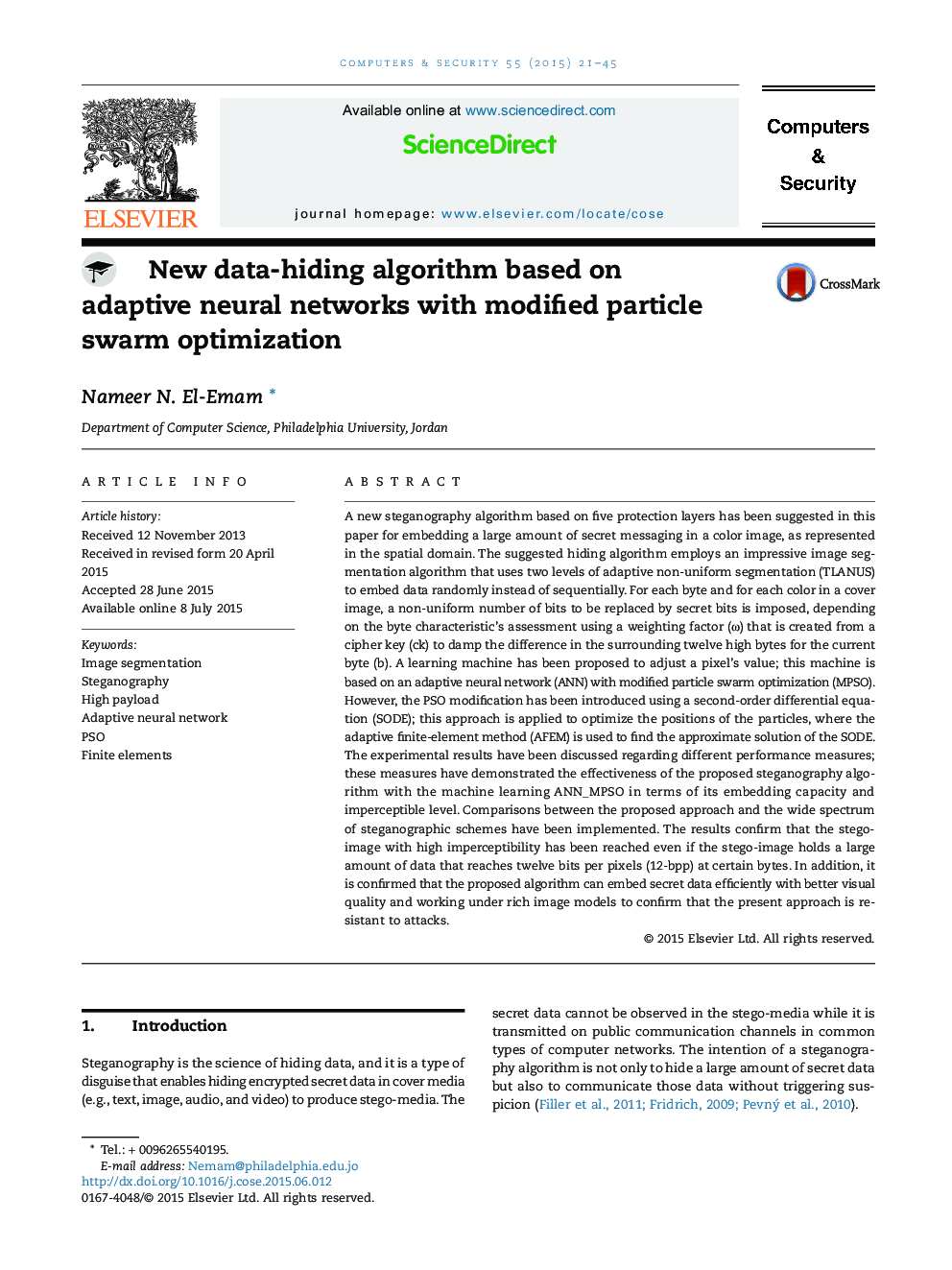| Article ID | Journal | Published Year | Pages | File Type |
|---|---|---|---|---|
| 455818 | Computers & Security | 2015 | 25 Pages |
•Proposed five layers of protection.•Extract byte characteristics.•Construct image segmentation.•Learning system.•Embedding and extracting secret message.
A new steganography algorithm based on five protection layers has been suggested in this paper for embedding a large amount of secret messaging in a color image, as represented in the spatial domain. The suggested hiding algorithm employs an impressive image segmentation algorithm that uses two levels of adaptive non-uniform segmentation (TLANUS) to embed data randomly instead of sequentially. For each byte and for each color in a cover image, a non-uniform number of bits to be replaced by secret bits is imposed, depending on the byte characteristic's assessment using a weighting factor (ω) that is created from a cipher key (ck) to damp the difference in the surrounding twelve high bytes for the current byte (b). A learning machine has been proposed to adjust a pixel's value; this machine is based on an adaptive neural network (ANN) with modified particle swarm optimization (MPSO). However, the PSO modification has been introduced using a second-order differential equation (SODE); this approach is applied to optimize the positions of the particles, where the adaptive finite-element method (AFEM) is used to find the approximate solution of the SODE. The experimental results have been discussed regarding different performance measures; these measures have demonstrated the effectiveness of the proposed steganography algorithm with the machine learning ANN_MPSO in terms of its embedding capacity and imperceptible level. Comparisons between the proposed approach and the wide spectrum of steganographic schemes have been implemented. The results confirm that the stego-image with high imperceptibility has been reached even if the stego-image holds a large amount of data that reaches twelve bits per pixels (12-bpp) at certain bytes. In addition, it is confirmed that the proposed algorithm can embed secret data efficiently with better visual quality and working under rich image models to confirm that the present approach is resistant to attacks.
